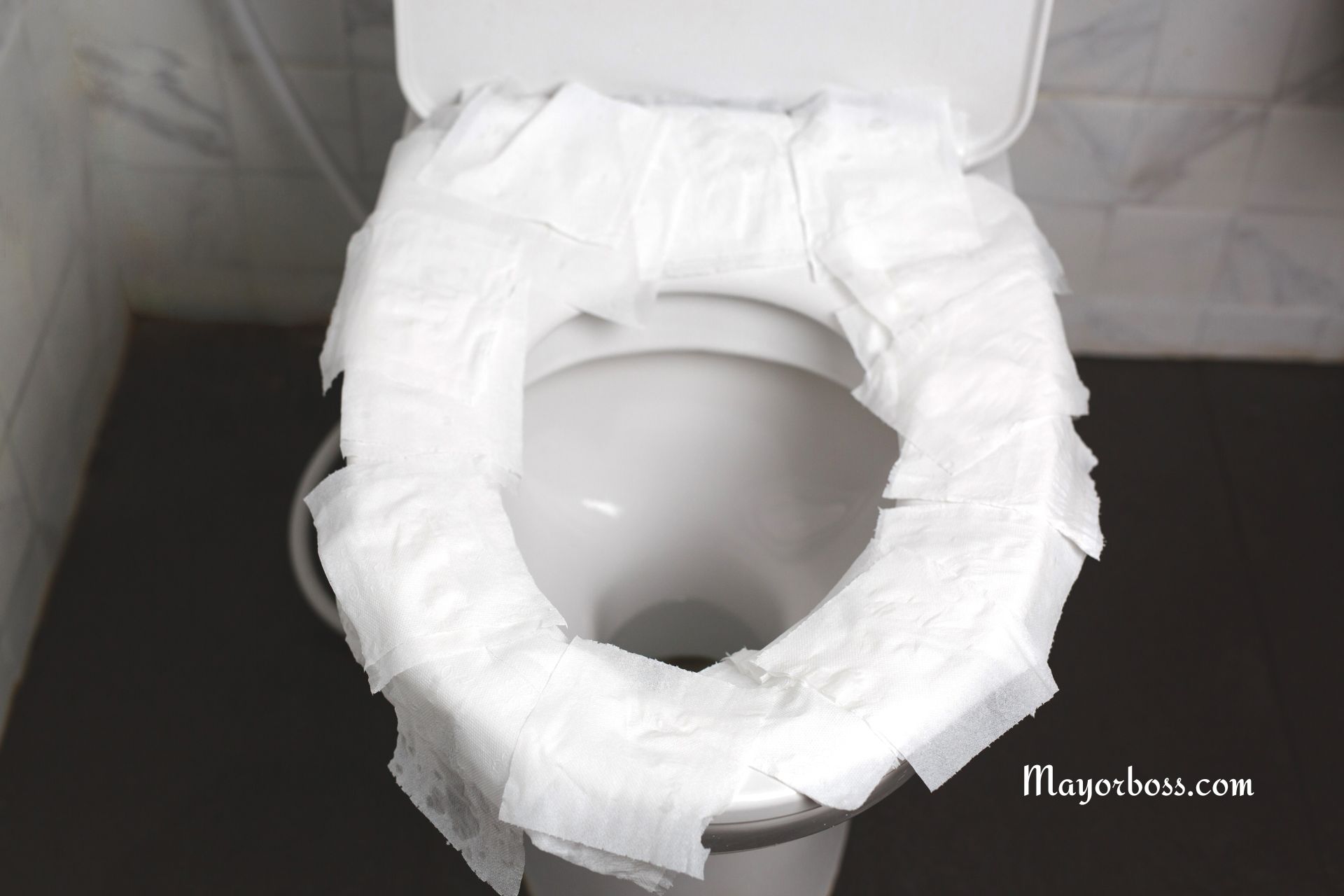Why You Should Never Put Toilet Paper on the Toilet Seat
When you enter a public restroom and see a less-than-spotless toilet seat, your first instinct might be to cover it with toilet paper before sitting down. You’re trying to protect yourself, right? Well, hold on a minute. This common practice might not be as helpful as you think. Keep reading to learn why putting toilet paper on the toilet seat is a bad idea.

It’s Not as Protective as You Think
First things first, let’s face it: the idea that toilet paper acts as a strong barrier against germs is a bit of a stretch. Toilet paper is thin and porous, hardly a fortress against bacteria and viruses. The truth is that most toilet seats are designed to be non-porous and resist bacteria. So, in reality, the toilet seat itself might be less of a risk than you think.
The Real Hotspots for Germs
Now, here’s the kicker: the real germ hotspots in a restroom are not the toilet seats but the handles, faucets, and paper towel dispensers. These are the areas where germs are most likely to be found because they are touched frequently by many people. By touching the toilet paper dispenser and then placing the paper on the seat, you might actually be transferring more germs to your hands and to the seat!
Psychological Comfort vs. Practicality
Honestly, placing toilet paper on the seat often serves more as a psychological comfort than a practical protective measure. It makes you feel better, but it doesn’t do much to prevent germ transmission. In fact, some studies suggest that the skin on your buttocks and thighs is quite good at resisting bacteria and viruses.
The Mess Factor
Think about this: when you cover a toilet seat with paper, you’re not just potentially wasting paper; you’re also likely contributing to restroom messiness. Bits of paper can stick to the seat or fall on the floor, making the space less clean for the next person. It’s a cycle of mess that doesn’t help anyone.
What Can You Do Instead?
So, what’s the answer? The best practice is to wash your hands thoroughly before and after using the restroom. This is your real defense against germs. If a toilet seat looks dirty, it’s wiser to find another stall or use a seat sanitizer if available. And if you must use a cover for peace of mind, opt for the disposable seat covers often provided in public restrooms—they’re designed for this purpose.
Public health experts and studies have repeatedly indicated that the fear of catching diseases from toilet seats is largely unfounded. Diseases that people worry about, such as sexually transmitted infections or gastrointestinal infections, are not typically spread by sitting on toilet seats. The consensus among experts is that washing your hands thoroughly after using the restroom is the most effective way to prevent the transmission of germs.
In summary, the practice of placing toilet paper on public toilet seats may offer more psychological comfort than actual protection against germs. The design of toilet seats, the short survival time of pathogens on their surface, and the skin’s role as a barrier make the transmission of diseases through direct contact with toilet seats highly unlikely. The emphasis should instead be on proper hand hygiene to prevent the spread of infections
Frequently Asked Questions
1. Is it really safe to sit on a public toilet seat without protection?
Yes, it’s true! The risk of catching diseases from a public toilet seat is very low. Your skin is an excellent barrier against pathogens as long as you have no open cuts or sores.
2. What are the best ways to protect myself in a public restroom?
Focus on washing your hands thoroughly with soap and water. Also, avoid touching your face until your hands are clean, and use a paper towel to turn off faucets and open doors as you leave.
3. Can germs on toilet seats cause skin infections?
Not necessarily. Skin infections are more likely to come from direct contact with infected skin or shared items like towels, not from brief contact with a toilet seat.






